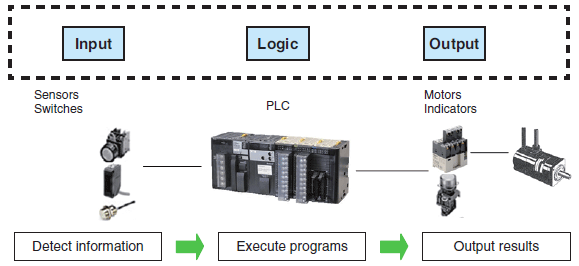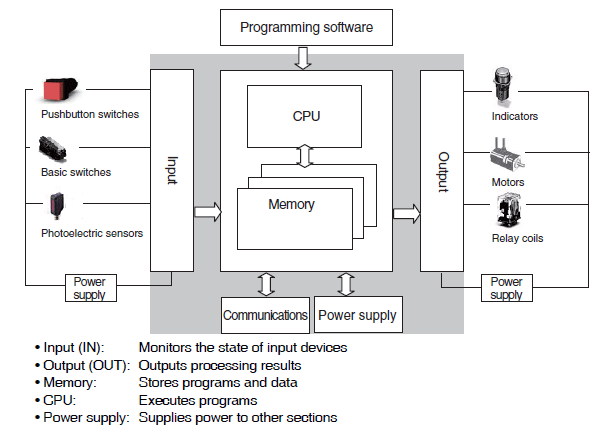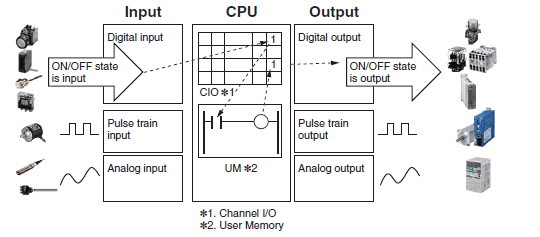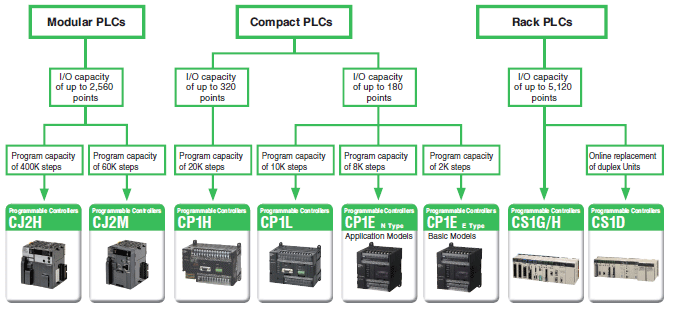Programmable Controllers
| Introduction | Features |
| Principles | Classifications |
| Engineering Data |
|
|
|
Troubleshooting |
What Is a Programmable Controller?
A programmable controller (PLC) has a microprocessor and controls devices through custom user programs.
A PLC receives signals from input devices and makes decisions based on custom programs to control output devices.

Ladder logic is a graphical programming language and commonly used for PLC programming. Programming software, such as CX-Programmer, is used for programming on a PC.
Inside a PLC
I/O devices are connected to the input and output sections of the PLC. The user program determines how output devices work based on the state of input devices. The user program and the state of I/O devices are stored in the internal memory of the PLC.

Types of Data
The types of data used by a PLC can be classified into three major groups.
| Input to PLC input | Output from PLC output | |
| ON/OFF state (discrete I/O) | Pushbutton switches Thumbwheel switches Photoelectric sensors and proximity sensors Input relays | Indicators Seven-segment displays Relays and contactors |
| Pulse train (series of rapid ON/OFF) | Rotary encoders Photomicrosensors | Servomotors Pulse motors |
| Analog value (current/voltage) | Displacement sensors Thermocouples | Inverters |




